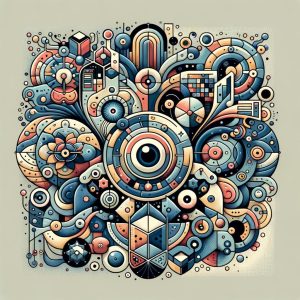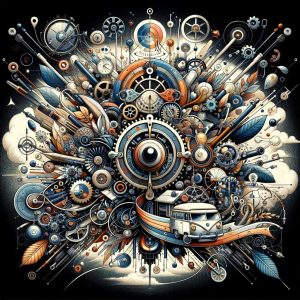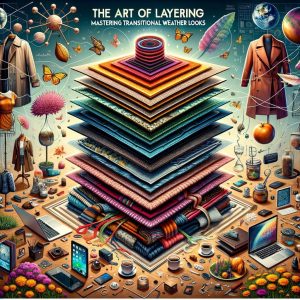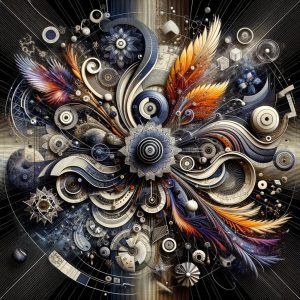“Exploring Alternative Therapies: Acupuncture and Beyond”
In a world where the pursuit of wellness often leads us down a maze of conventional medicine, an increasing number of individuals are turning to alternative therapies for relief, balance, and healing. Among these time-honored practices, acupuncture stands out—its roots spanning thousands of years and cultures, yet gaining renewed interest in modern times. But acupuncture is only the beginning. As we delve into the realm of alternative therapies, we’ll uncover a tapestry woven with diverse techniques, from herbal medicine and meditation to energy healing and beyond. This exploration challenges us to reconsider the boundaries of treatment, inviting a holistic perspective that honors both mind and body. Join us as we navigate this enriching landscape, where ancient wisdom meets contemporary curiosity, and discover how these alternative approaches might complement, enhance, or even transform our understanding of health.
Unveiling the Ancient Art of Acupuncture and Its Modern Applications
Acupuncture, an ancient healing practice rooted in Traditional Chinese Medicine, has transcended its historical origins to find a place in modern health and wellness. This intricate art involves the strategic insertion of thin needles into specific points on the body, known as meridians, to stimulate the flow of Qi (pronounced “chee”), the vital life force. With a rich history spanning thousands of years, acupuncture has gained recognition not only for its efficacy in pain management but also for promoting overall well-being. As it continues to evolve, integrative clinics are now combining acupuncture with other therapies, enhancing its therapeutic potential and expanding its benefits to those seeking alternative solutions to conventional medicine.
In contemporary practice, acupuncture has also been embraced to address a range of health concerns, from chronic pain to anxiety and digestive issues. Research has shown its effectiveness in various settings, which has led to an increase in awareness and acceptance among healthcare professionals. The following are some of the modern applications of acupuncture:
- Pain management: Alleviating back pain, migraines, and arthritis.
- Stress relief: Reducing anxiety and improving mental clarity.
- Reproductive health: Supporting fertility treatments and menstrual irregularities.
- Digestive disorders: Relieving symptoms of IBS and nausea.
To showcase the burgeoning role of acupuncture in modern healthcare, consider this concise overview of its impact:
| Condition Treated | Acupuncture Benefits |
|---|---|
| Chronic Pain | Pain reduction and enhanced mobility |
| Insomnia | Improved sleep quality and duration |
| Stress | Reduced cortisol levels and enhanced relaxation |
| Digestive Issues | Balanced digestive function |
Integrative Approaches: Merging Traditional and Contemporary Therapies
As the landscape of health and wellness continues to evolve, the integration of traditional and contemporary therapies offers a holistic approach to healing. By combining methods like acupuncture with modern practices, patients can experience a more comprehensive treatment plan. This blending not only respects ancient wisdom but also embraces scientific advancements, allowing practitioners to tailor therapies to individual needs. Some effective integrative techniques include:
- Mindfulness-Based Stress Reduction: Incorporating meditation and breathing exercises alongside acupuncture sessions.
- Herbal Medicine: Utilizing traditional herbs in conjunction with nutrition counseling for enhanced well-being.
- Physical Therapy: Merging physical rehabilitation techniques with acupuncture to improve mobility and pain relief.
To better understand the benefits of integrative approaches, consider the following table that compares key aspects of traditional and contemporary therapies:
| Aspect | Traditional Therapies | Contemporary Therapies |
|---|---|---|
| Focus | Holistic well-being | Specific symptoms and conditions |
| Approach | Energetic balance | Evidence-based practices |
| Tools | Needles, herbs, massage | Technology, pharmaceuticals |
This fusion not only aids in treating chronic conditions but also emphasizes preventive care, essential for maintaining overall health. By respecting the intricate relationship between body, mind, and spirit, these integrative strategies can empower individuals on their journey toward wellness.
Navigating the World of Alternative Treatments: Risks and Benefits
Alternative treatments, such as acupuncture, herbal remedies, and homeopathy, are gaining popularity as individuals seek complementary options to conventional medicine. While many patients report positive outcomes, it’s crucial to recognize that these therapies may carry certain risks. For instance, acupuncture, though generally safe when performed by a trained practitioner, can lead to side effects like minor bruising or soreness. Furthermore, relying solely on alternative therapies might delay the diagnosis of serious conditions, leading to potentially adverse outcomes. Thus, discussing these options with a healthcare provider ensures a balanced approach to treatment.
On the positive side, engaging with alternative therapies can offer various benefits. Many individuals find relief from chronic pain, improved mental well-being, and enhanced quality of life through practices such as acupuncture. Additionally, these treatments often focus on holistic care, addressing both mind and body, which can lead to improved patient satisfaction. Here’s a brief overview of some key aspects of popular alternative treatments:
| Treatment | Potential Benefits | Considerations |
|---|---|---|
| Acupuncture | Chronic pain relief, anxiety reduction | Requires skilled practitioner |
| Herbal Remedies | Natural support for various conditions | Risk of interactions with medications |
| Homeopathy | Personalized treatment options | Scientific debate on efficacy |
Personalizing Your Wellness Journey: Finding the Right Therapy for You
Embarking on a wellness journey is inherently personal, and discovering a therapy that resonates with you can dramatically enhance your experience. Alternative therapies, such as acupuncture, offer unique approaches to healing that go beyond conventional methods. Understanding your individual needs can help you make informed decisions. Consider these key aspects when exploring your options:
- Your Health Goals: Identify what you hope to achieve—pain relief, stress reduction, or emotional wellbeing.
- Personal Preferences: Reflect on whether you respond better to hands-on treatments, or if you prefer more holistic practices.
- Consultation: Meet with practitioners to discuss your specific issues; their insights can guide you toward the right therapy.
- Holistic Integration: Evaluate how a therapy can complement your existing wellness routine, encouraging a balanced approach.
Considerations extend beyond just the type of therapy; they also encompass how these treatments are delivered. For instance, the atmosphere of a treatment space, the practitioner’s communication style, and the method of therapy all play crucial roles. To visualize some popular alternative therapies and their benefits, here’s a snapshot:
| Therapy | Key Benefits |
|---|---|
| Acupuncture | Relief from pain, stress management, improved energy flow. |
| Yoga | Enhances flexibility, promotes relaxation, strengthens body awareness. |
| Aromatherapy | Reduces anxiety, boosts mood, supports sleep quality. |
| Massage Therapy | Relieves tension, improves circulation, enhances overall relaxation. |
Insights and Conclusions
As we navigate the ever-evolving landscape of health and wellness, the allure of alternative therapies like acupuncture and its counterparts remains compelling. From ancient practices rooted in tradition to modern adaptations that emphasize holistic healing, these approaches invite us to explore the complex interplay of body, mind, and spirit. While the scientific community continues to investigate their efficacy and mechanisms, personal testimonies often illuminate the potential benefits these therapies can offer.
Ultimately, the journey through alternative therapies is as unique as each individual and their health needs. As you consider integrating such practices into your wellness routine, remember to balance open-minded exploration with informed decision-making. The world of alternative therapies is vast and diverse, offering pathways that may resonate with you in surprising ways. Whether you find solace in acupuncture’s gentle needles or uncover new horizons with therapies yet to be discovered, the pursuit of well-being is a personal voyage worth embracing.
In the tapestry of health, each thread matters—may you weave together the ideas and practices that best support your path to a balanced and fulfilled life.













Post Comment